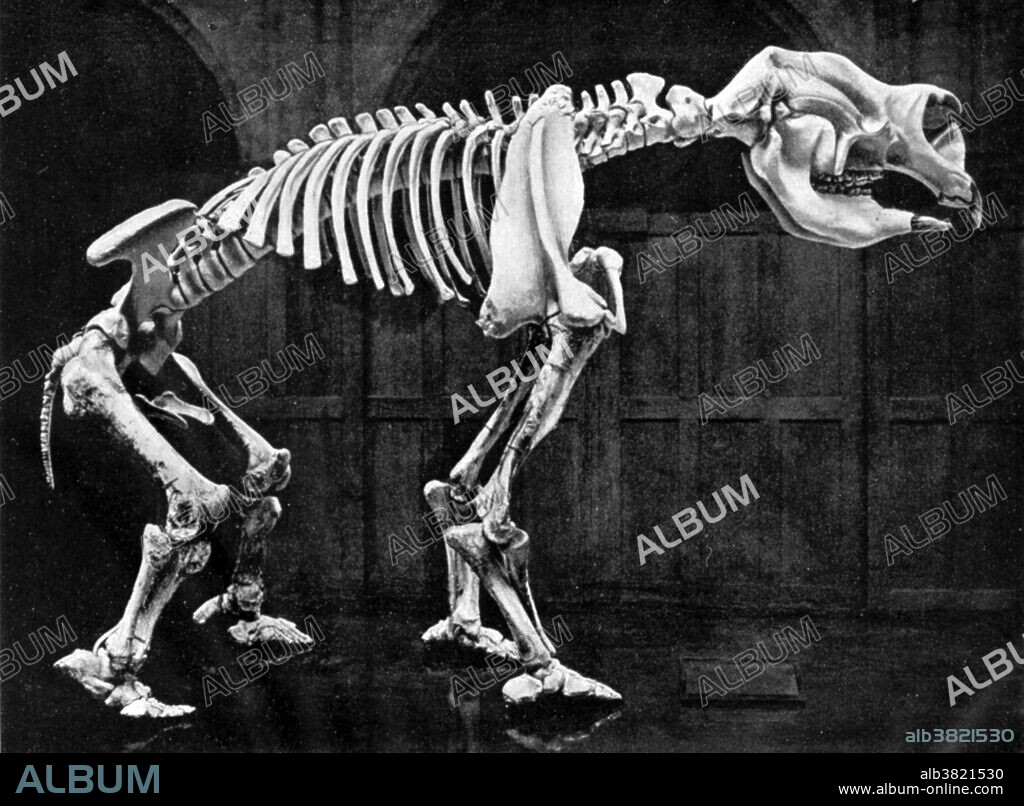alb3821530
Diprotodon, Cenozoic Mammal

|
Zu einem anderen Lightbox hinzufügen |
|
Zu einem anderen Lightbox hinzufügen |



Haben Sie bereits ein Konto? Anmelden
Sie haben kein Konto? Registrieren
Dieses Bild kaufen.
Nutzung auswählen:

Titel:
Diprotodon, Cenozoic Mammal
Untertitel:
Siehe automatische Übersetzung
Diprotodon (two forward teeth), sometimes known as the Giant Wombat or the Rhinoceros Wombat, was the largest known marsupial that ever lived. Along with many other members of a group of unusual species collectively called the "Australian megafauna", it existed from approximately 1.6 million years ago until extinction some 46,000 years ago. They inhabited open forest, woodlands, and grasslands, possibly staying close to water, and eating leaves, shrubs, and some grasses. This animal appeared during Cenozoic era, the most recent era of geologic time, from about 65 million years ago to the present. The Cenozoic Era is characterized by the formation of modern continents and the diversification of mammals and plants. Grasses also evolved during the Cenozoic. The climate was warm and tropical toward the beginning of the era and cooled significantly in the second half, leading to several ice ages. Humans first appeared near the end of this era.
Bildnachweis:
Album / Science Source
Freigaben (Releases):
Model: Nein - Eigentum: Nein
Rechtefragen?
Rechtefragen?
Bildgröße:
4350 x 3198 px | 39.8 MB
Druckgröße:
36.8 x 27.1 cm | 14.5 x 10.7 in (300 dpi)
Schlüsselwörter:
 Pinterest
Pinterest Twitter
Twitter Facebook
Facebook Link kopieren
Link kopieren Email
Email
